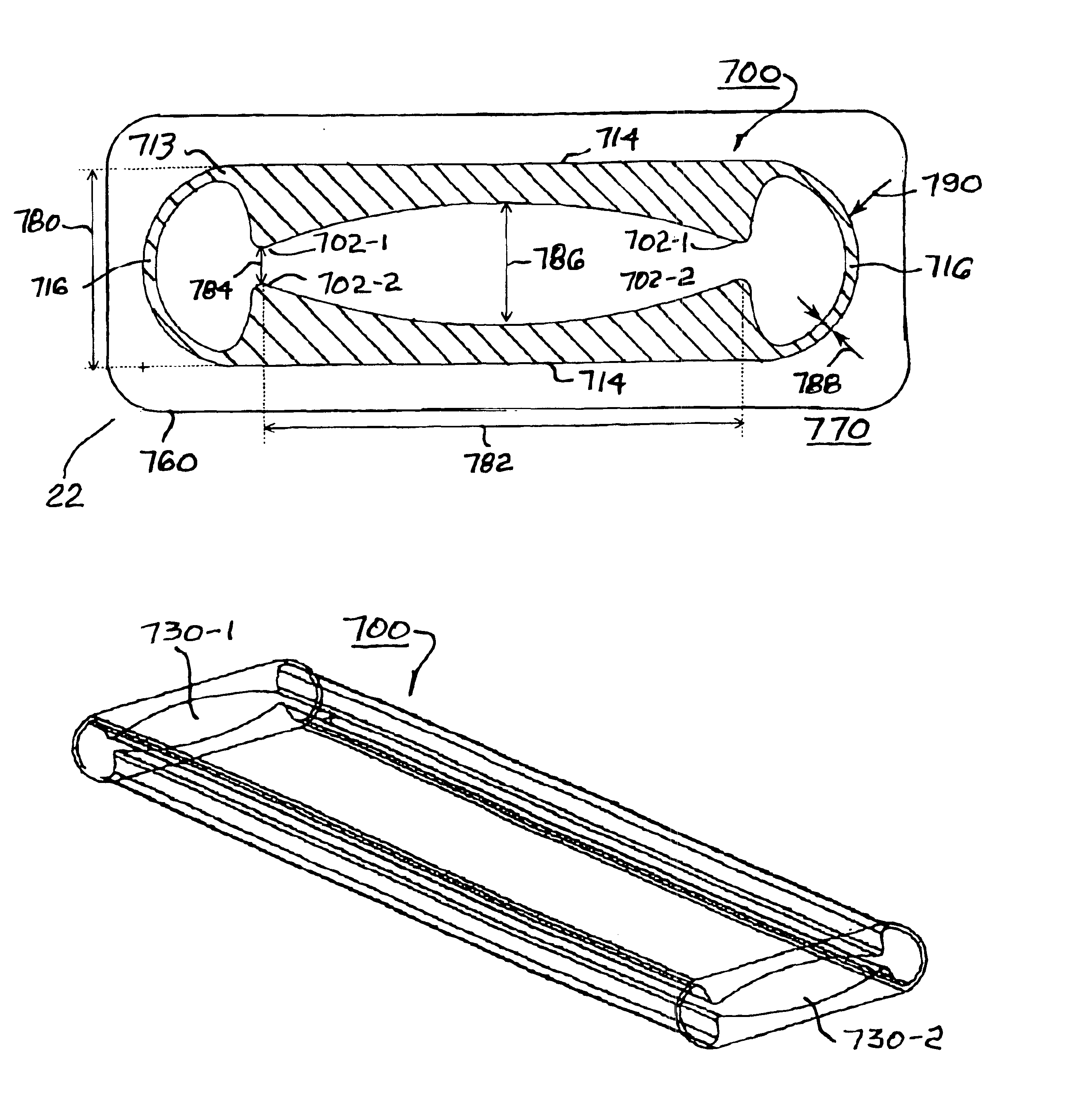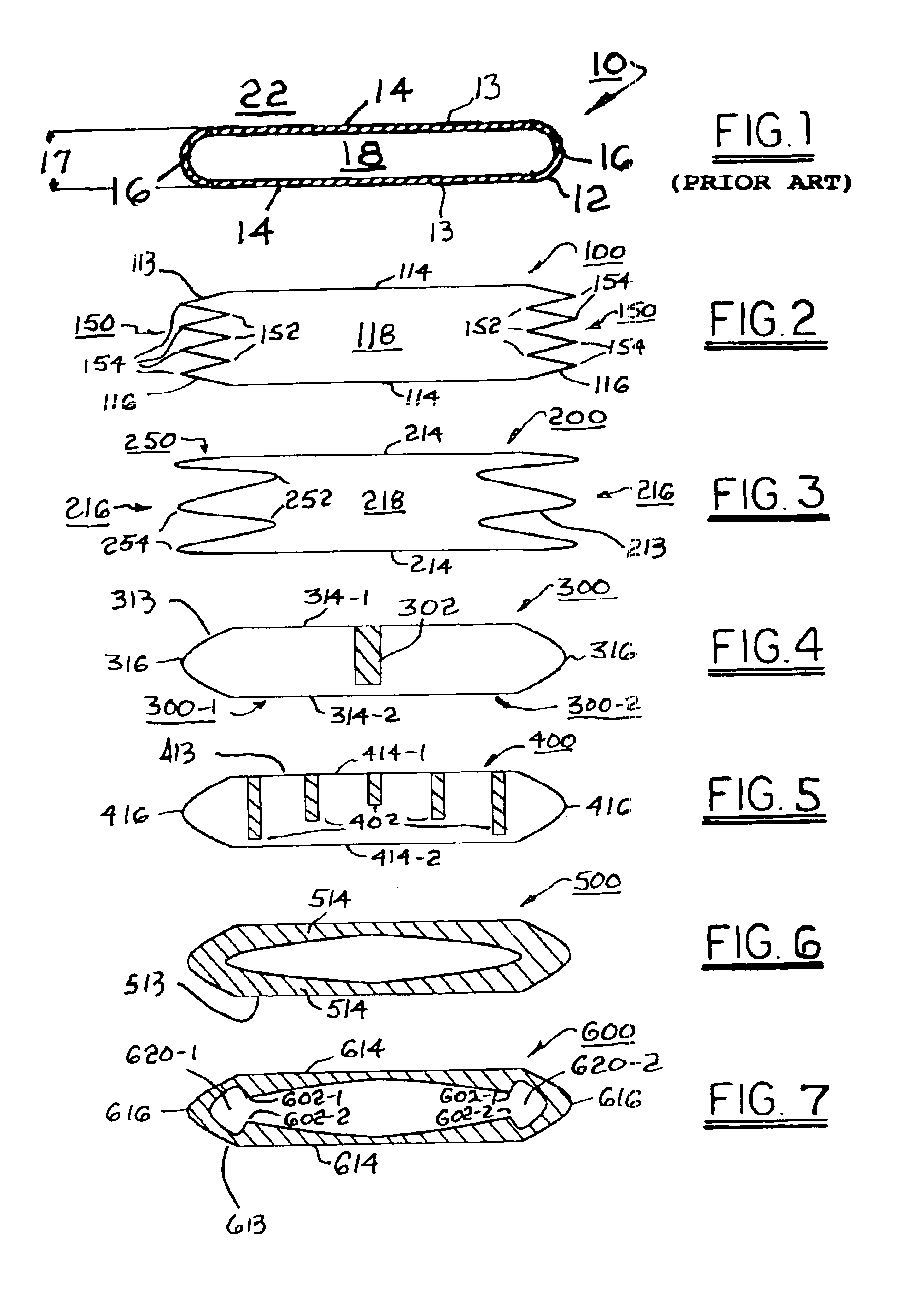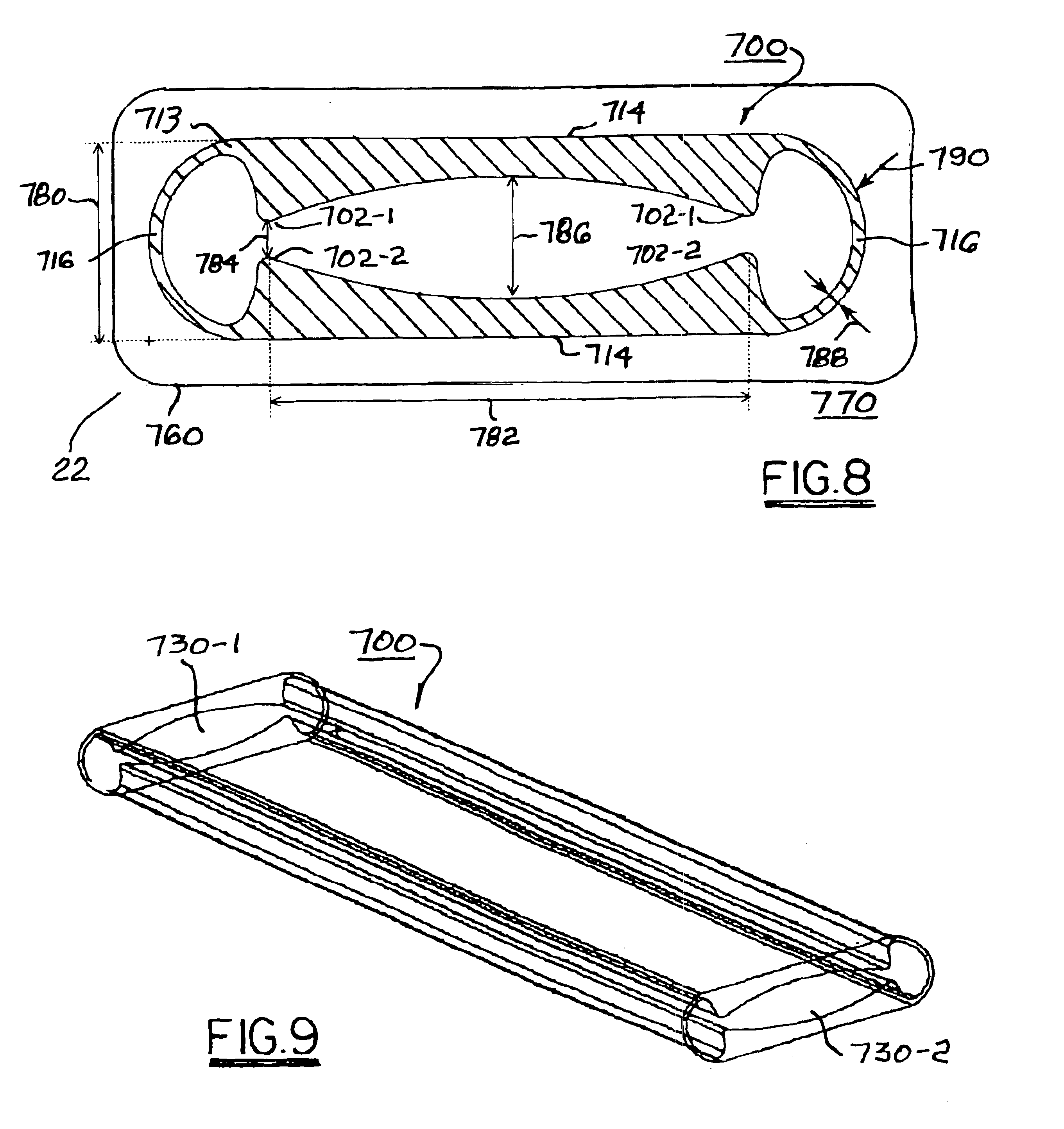Variable stiffness fuel rail pulse damper having extended dynamic range
a technology of dynamic range and fuel rail, which is applied in the direction of liquid fuel feeders, machines/engines, fuel injecting pumps, etc., can solve the problems of increasing the hardware cost of an engine, reducing the efficiency of the engine, and pulsating pressure in the fuel itself, so as to reduce the resultant stress and reduce the effect of mechanical cos
- Summary
- Abstract
- Description
- Claims
- Application Information
AI Technical Summary
Benefits of technology
Problems solved by technology
Method used
Image
Examples
embodiment 500
[0032]Referring to FIG. 6, in embodiment 500, walls 513 having diaphragm sides 514 have significant thickness, and taper in thickness from center to edge. Sides 514 can flex inwards under pressure. Under a predetermined external pressure, sides 514 self-contact. Due to the cross-sectional shape, the self-contact will initiate closer to the sides of the damper and work its way progressively towards the center of the damper as pressure continues to increase. This embodiment provides a continuously variable damper response characteristic.
[0033]Referring to FIG. 7, embodiment 600 is similar to embodiment 500 in having walls 613 including tapered diaphragm sides 614, but short sides 616 are thinned down to provide greater flexure by providing first and second side galleries 620-1, 620-2 further defining first and second contact elements 602-1, 602-2. As pressure is applied to embodiment 600, not only do sides 614 flex inwards, but sides 616 also flex outwards until the contact elements m...
embodiment 700
[0035]Embodiment 700 shown in FIG. 9 is shown as open-ended, but of course that is simply a representative longitudinal portion of an actual damper, which would have ends 730-1,730-21 closed as by separate end pieces (not shown) or by being crimped and fused shut to capture gas within the damper in known fashion.
[0036]Referring to FIGS. 10 through 16, a finite element analysis of embodiment 700 shows deformations of sides 714 and 716 at various external pressures between 0 MPa (FIG. 10) and 1 MPa (FIG. 16). It is seen that contact elements 702-1, 702-2 touch at about 170 kPa (FIG. 12). At pressures below that level, diaphragm sides 714 are urged toward one another almost without deformation by decreasing the radius of curvature of sides 716. Once the contact elements meet, forming lateral chambers 720-1 and 720-2, sides 716 participate very little in further pressure absorption. Embodiment 700 is shifted to a second pressure / response regime wherein deformations of sides 714 are acco...
PUM
 Login to View More
Login to View More Abstract
Description
Claims
Application Information
 Login to View More
Login to View More - R&D
- Intellectual Property
- Life Sciences
- Materials
- Tech Scout
- Unparalleled Data Quality
- Higher Quality Content
- 60% Fewer Hallucinations
Browse by: Latest US Patents, China's latest patents, Technical Efficacy Thesaurus, Application Domain, Technology Topic, Popular Technical Reports.
© 2025 PatSnap. All rights reserved.Legal|Privacy policy|Modern Slavery Act Transparency Statement|Sitemap|About US| Contact US: help@patsnap.com



